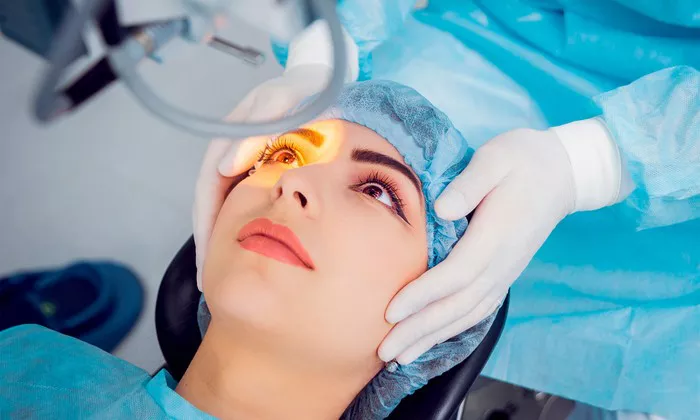In a groundbreaking surgical development, researchers have unveiled a new approach to addressing progressive zonulopathy, a condition associated with the dispersion of dandruff-like proteins in the eye. The presence of these proteins increases the risk of complications such as capsule damage, vitreous prolapse, and poor visual recovery in affected patients. Those with progressive zonulopathy often exhibit poorly dilating pupils and loose zonular support.
During the initial consultation, a patient presented with a 2.5 mm anterior chamber depth while seated upright at the slit lamp, a seemingly shallow measurement considering the patient’s 23.6 mm axial length and emmetropia. Notably, when the patient reclined to the supine position, the anterior chamber depth increased to approximately 3.5 mm, indicating significant zonular laxity and movement of the entire lens-iris diaphragm.
In the operating room, the patient exhibited a much deeper anterior chamber while in the supine position, affirming the findings from the initial examination. The instillation of an intracameral mydriatic agent resulted in a pupil dilation of about 6.5 mm, a positive sign as poor dilation is associated with higher risks of complications and capsular damage.
The condition of zonular support was further assessed during the creation of the capsulorrhexis. Extensive wrinkling of the anterior lens capsule and movement of the nucleus during capsulorrhexis tearing would indicate severe zonular laxity. Fortunately, the capsule and lens in this case remained relatively stable, allowing for the creation of a large 5.5 mm diameter capsulorrhexis. This proactive measure aims to counter potential postoperative issues, such as anterior lens capsule contraction and phimosis.
The surgical procedure involved hydrodissection to partially bring the nucleus out of the capsular bag, followed by chopping at the iris plane to minimize stress on the capsular bag. Cortex removal was conducted cautiously using a coaxial irrigation-aspiration probe to avoid exacerbating zonulopathy.
Noting the capsular bag’s floppy nature and a tendency to collapse during cortex removal, surgeons opted to implant a capsular tension ring (CTR) into the capsular bag. Precise and controlled placement of the CTR was achieved using a hook to guide the leading eyelet. For intraocular lens (IOL) placement, the team had two primary options: placing the IOL into the capsular bag for cases of moderate zonulopathy or, in cases of more severe zonular weakness, opting for a three-piece IOL with haptics in the sulcus and the optic captured behind the capsulorrhexis. In this instance, the zonulopathy was deemed moderate, and the IOL was fully placed in the capsular bag, ensuring optimal overlap with the capsulorrhexis.
The patient experienced a successful outcome with a remarkable vision recovery. While long-term stability and centration of the IOL are anticipated, researchers acknowledge the possibility of late-stage progressive zonulopathy in the future. In such cases, the lens-bag complex can be secured to the sclera using sutures around the CTR, offering a potential solution to address any displacement concerns a decade or two from now.


